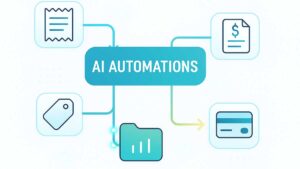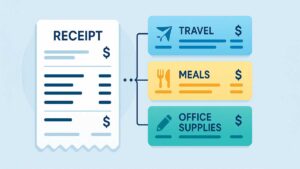Why Mixing Up Invoices and Receipts Can Cost You More Than You Think
When you’re running a business or freelancing, paperwork can feel endless. But among all those documents, two stand out: the invoice and the receipt. They look similar, they sound similar, yet they play very different roles in your financial story. Understanding the difference between an invoice and a receipt can save you headaches come tax season and keep your business looking sharp and professional.
Invoice vs Receipt: A Quick Overview
Think of it this way:
An invoice asks for payment.
A receipt proves that payment was made.
It’s that simple. But behind those two sentences lies a world of good habits, legal compliance, and smart bookkeeping.
What Is an Invoice?
An invoice is your professional handshake; a formal request for payment sent to your client. It’s usually issued before or after the delivery of goods or services, but always before payment.
An invoice typically includes:
- The invoice date and due date
- An itemized list of products or services
- Unit prices, tax details, and the total amount due
- Payment terms; when and how you expect to get paid
In essence, it’s not just a bill. It’s a record of trust between two parties.
Key Points About Invoices
- Formal Request for Payment: You’re asking your client to settle the amount due.
- Detailed Breakdown: It shows exactly what was delivered and at what cost.
- Payment Terms: Clear terms prevent awkward payment delays or misunderstandings.
What Is a Receipt?
Now, a receipt closes the loop. It’s issued after the client pays and acts as proof of payment. It confirms that money has changed hands and the transaction is complete.
A typical receipt includes:
- The date of payment
- The amount paid
- The method of payment
- A brief description of goods or services
Key Points About Receipts
- Proof of Payment: It’s official evidence the payment was made.
- Final Transaction Record: It signals the deal is done.
- For Record-Keeping: Both you and your client can use it for tracking and accounting.
Invoice vs Receipt: Why the Difference Matters
You might wonder, “Does it really matter which one I use?” Absolutely. Here’s why:
- Professionalism: Sending an invoice before payment and a receipt afterward shows that you run your business by the book. It builds client confidence.
- Financial Tracking: Keeping both invoices and receipts gives you a clear snapshot of your cash flow; what’s coming in, what’s outstanding, and what’s already settled.
- Legal Compliance: Many tax authorities require proper documentation of both. Staying compliant protects you from legal or tax issues later on.
Invoice vs Receipt for Taxes
Here’s where things often get confusing.
If you’re verifying income, your invoices might be enough.
But if you’re verifying expenses or claiming tax deductions, you’ll need receipts as proof of payment.
In short:
- Invoices = request for payment
- Receipts = proof of payment
Different tax jurisdictions have their own rules, so it’s smart to check with your accountant. When in doubt, keep both.
Best Practices for Storing Invoices and Receipts
Paper fades. Ink smudges. Receipts vanish at the worst possible time. The best solution? Go digital.
Using a receipt scanner and expense tracker app keeps your records organized and secure. You can tag, search, and export receipts in seconds. No more shoebox filing systems.
If you’re not sure where to start, check out our guide comparing the top expense management apps. It will help you find the best fit for your workflow.
Conclusion: Mastering the Invoice and Receipt Difference
Understanding the difference between an invoice and a receipt isn’t just about paperwork; it’s about confidence. When you know exactly what to send and when, you project professionalism and keep your financial records airtight.
Invoices set expectations. Receipts confirm trust. Together, they form the backbone of good business practice.




